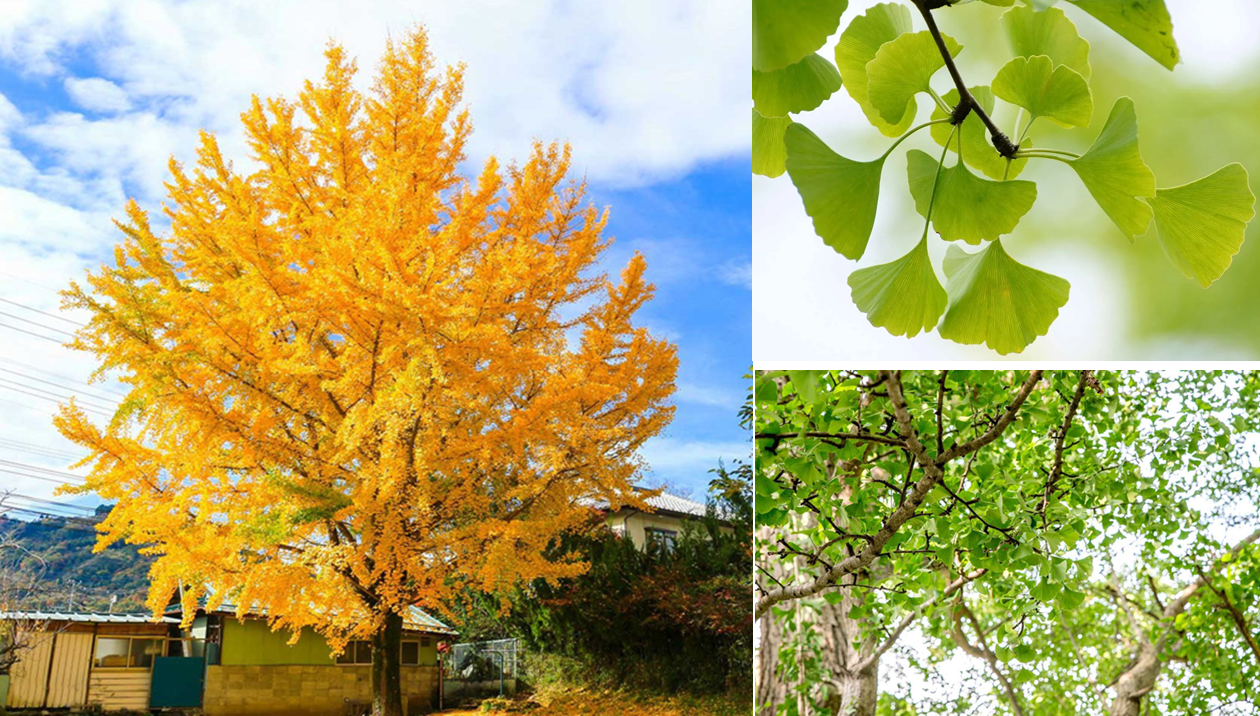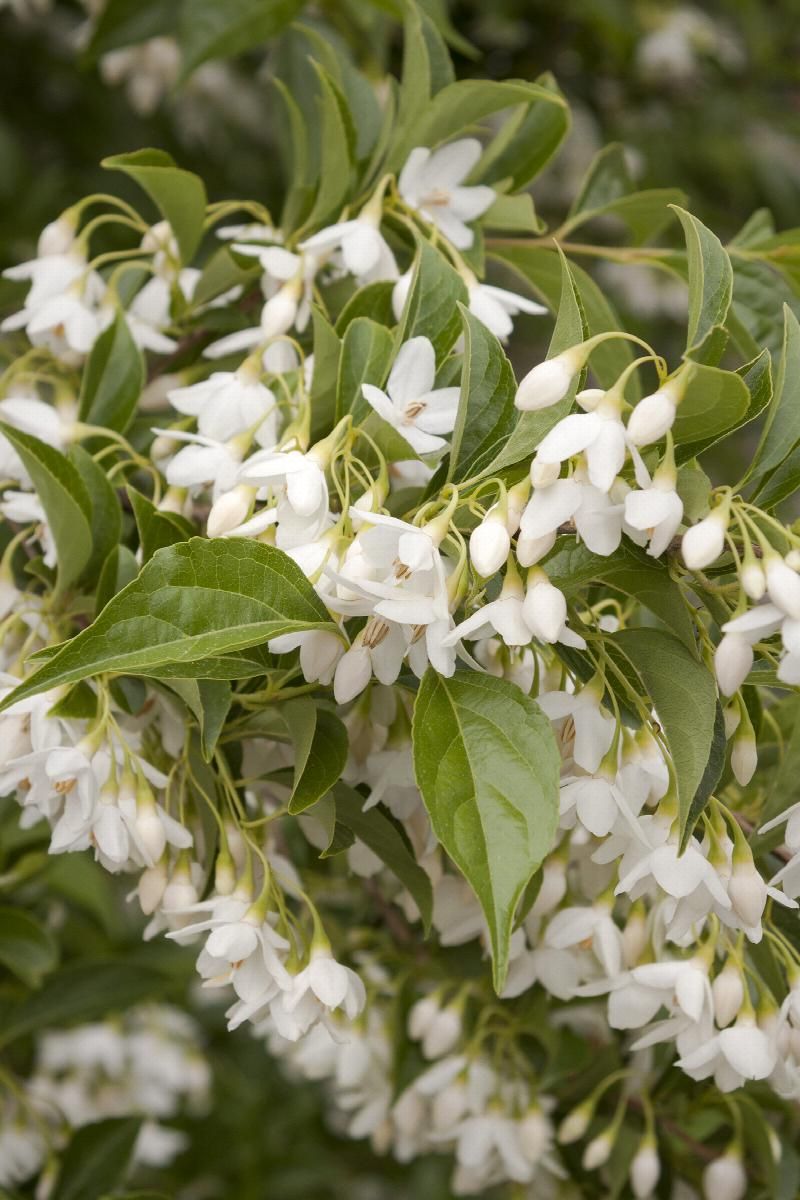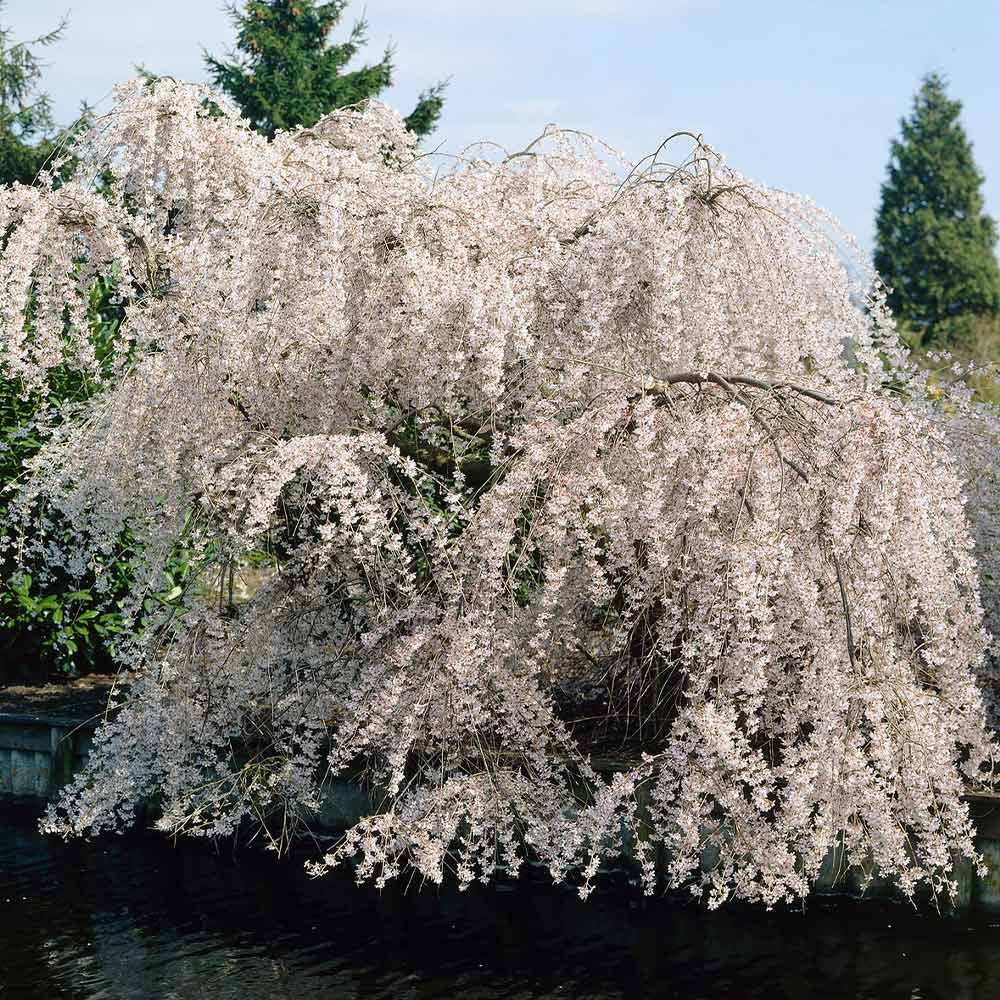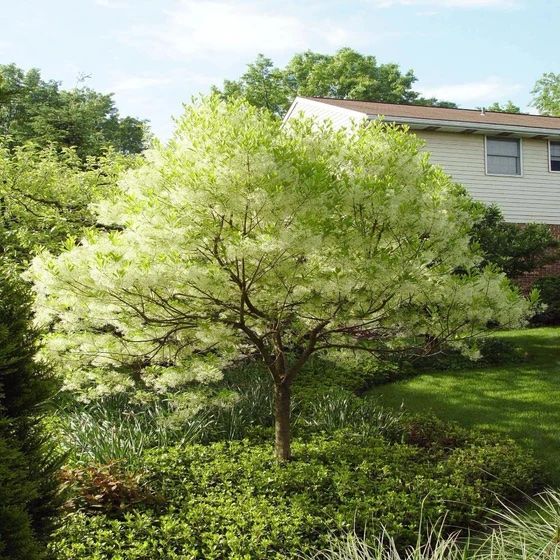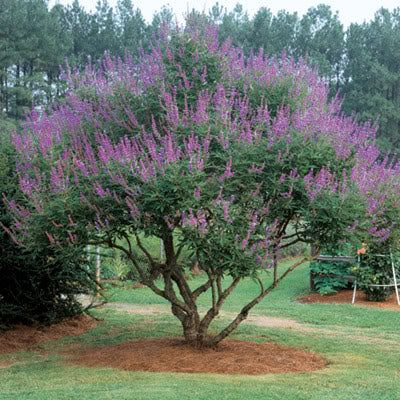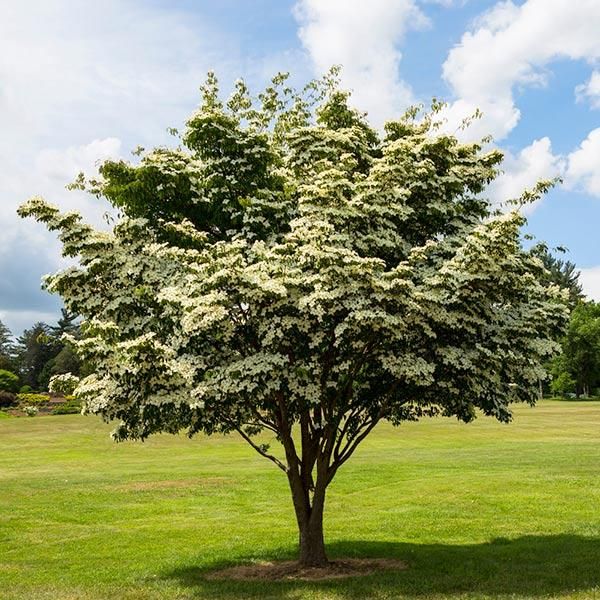Flowering Tree Spotlight
Ginkgo Tree, Ginkgo Biloba
Zone: 4-9 Nativity: China Size: 40-80’
Spread: 30-45’
Exposure: Full Sun-Part Sun
Bloom time: In fall the foliage explodes into a showy display of yellow, making up for their lack of color in the spring.
Growth rate: Moderate
This stunning tree is a slight break in our normal flowering tree spotlight. The Ginkgo tree’s time of “bloom” is in the fall when the entire tree’s foliage shines a bright golden on the tree before promptly making a “carpet” overnight. The Ginkgo is one of the oldest living species in the world (perhaps as old as 270 million years!). So it comes as no surprise that this is one exceptionally hardy tree. While almost reaching extinction, Tibetan monks started cultivating the Ginkgo 4,000 years ago for its beauty and supposed medicinal value. Now, it is one of the most commonly sighted tree thanks to it’s beauty and hardiness to nearly all conditions.
Japanese Snowbell, Styrax japonicus
This beautiful deciduous flowering tree is compact, starting as a vase shape when young and growing to a full rounded canopy as it ages; the Japanese Snowbell is a stunning specimen. Pretty spring buds, dark summer foliage, and vibrant fall color are some of this tree’s main draws. While not a native, this tree is a pollinator favorite and adds great wildlife value.
Botanical Name: Styrax japonicus
Zone: 5-9
Nativity: China, Japan, Korea
Size: 20’-30’
Spread: 20’-30’
Exposure: Full sun to part shade
Bloom time: Mid-late spring to early summer mildly fragrant waxy white flowers in bell shaped drooping clusters emerge all over the tree. Yellow and red fall foliage
Growth rate: Slow
WEEPING HIGAN CHERRY (Prunus pendulata ‘Pendula Rosea’ )
Exposure: Full sun – partial shade
Growth habit: Upright weeping habit
Height/Spread: 15 to 20 feet tall and wide
Bloom time: Early spring
Celebrate the start of spring with rose-pink buds open to pale pink blossoms before the leaves emerge. This variety’s flowers last a week or two longer than most other cherry varieties. Dark green foliage turns brilliant red or yellow in fall, while the weeping habit adds year-round structure and interest. Use as an elegant stand-alone focal point, or in an Asian-style landscape.
FRINGE TREE (Chionanthus virginicus)
Exposure: Full sun to partial shade
Growth habit: Upright spreading habit
Height/Spread: 12 to 20 feet tall and wide
Bloom time: Late spring to early summer
This hardy deciduous tree is named for the fragrant white fringe-like flowers that explode into a showy bloom in late spring. Female specimens produce black olive-like fruits, providing food for birds and other wildlife. Green lance-shaped foliage turns yellow in fall. This plant is very tolerant of urban conditions. Plant as a focal point, in a mixed border, or native landscape.
CHASTE TREE, Vitex agnus-castus
Exposure: Full sun
Growth habit: Upright spreading habit
Height/Spread: 4 to 20 feet tall, 4 to 15 feet wide
Bloom time: Mid to late summer
Chaste tree, grows as a small tree or shrub and produces showy fragrant violet-blue flower spikes resembling lupines. This vibrant pop of color is a pollinator’s dream! The deciduous foliage is pretty while not in bloom (broad palm-shaped leaflets.) This works wonderfully for a privacy screen in a small yard or in a mixed border.
KOUSA DOGWOOD, Cornus kousa
Exposure: Full sun – partial shade
Growth habit: Upright vase-shaped habit
Height/Spread: 15 to 30 feet tall and wide
Bloom time: May to June
This dogwood produces showy white, pink, or pale green bracts (not technically flowers, but for all practical purposes look like flowers!) in late spring to early summer. Large round strawberry-like fruits that develop after flowering provide not only visual interest but tons of wildlife value. Deciduous foliage is green or variegated, with scarlet or purple fall color. Use in a formal or informal landscape as a focal point.
